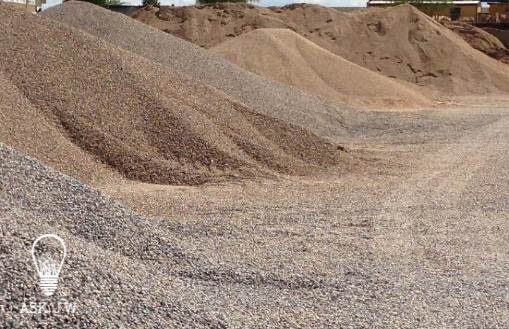Over the last year, I have had several calls pertaining to worms wreaking havoc on putting greens, or should I say under putting greens. I have spoken on this subject before, but after hearing horror stories of putting greens having to be completely removed and replaced, I thought I would reiterate how crucial it is to be aware of the destruction earthworms can cause on putting greens. This month, Ask JW will talk about how and why earthworms cause havoc on putting greens and how to prevent it.
It’s normal to see earthworms present within your home’s lawn or garden. This is a sign of healthy soil. Earthworms thrive on the enriched soil that contains high levels of organic material. The only time you may see earthworms above the surface is when there are periods of excessive moisture, such as after rainfall. However, earthworms tend to surface in natural lawns to deposit their castings, and they will try to do the same with synthetic turf. Worm castings, also known as vermicast, are essentially worm excrement. These excretions are remains of nutrients and digested plant matter that have passed through the worm. These may be good for your lawn or garden, but not for soils underneath putting greens. If you have witnessed earthworm castings in the area that you are wanting to place a putting green, I would take heed and listen to what I am about to teach you.
Earthworms can destroy putting green, bocce ball, and lawn bowling sub-base materials. Those little critters create havoc when they make a home beneath your playing surface, as they create burrow channels below the compacted soil. When this happens, erosion takes place and this creates an uneven playing surface above. These little trenches will get worse over time, especially when excessive rain water becomes present.
If your area is subject to earthworms, I recommend using a larger aggregate for your base material. The smaller the materials are in size, the more likely it is that earthworms may infiltrate your sub-base.
Earthworms move throughout the soil creating aeration. This aeration is what wreaks havoc on putting green surfaces. When earthworms tunnel throughout the compacted base, it creates voids. These voids settle over time, which allows the putting green surface to have depressions. Areas where tunnels connect can leave up to one-inch voids.
If there is excessive moisture, it may become worse. When the soil is flooded, the worms cannot get enough oxygen, so they come to the surface to breathe. The center picture above shows how deep earthworms can tunnel. You will never know if they attack the subgrade soil until your surface starts to show irregularities.
Dealing with Earthworms
We respect how beneficial the earthworm can be for lawns and gardens, but NOT for putting greens. There are ways to deal with earthworms and their castings.
- Do not overwater. Earthworms will stay near the surface if it is continuously moist, but they will go down deeper in search of moisture if the top few inches of soil are dryer.
- If earthworms are a concern, I recommend excavating and removing their habitat.
- If you place a weed suppressor under your putting green, you will need to place a vermicide prior. Weed suppressors hold moisture, and earthworms love hanging out below it.
- Prior to placing compaction materials, place vermicide within every lift.
- Pour a concrete base to elevations, sink the putting green cups to height, and glue the putting green to the cured concrete surface.
- Relocate the putting green.
Worm-Killing Chemical is a Vermicide
It would be ideal if we could relocate the putting green and not harm earthworms, but that would be an enormous task. I have researched the information below so that you can identify which chemicals can be used for earthworms without damaging synthetic turf. I recommend always doing a patch test prior to placing any chemical on synthetic turf.
I recommend hiring a contractor who has the Certificate of Competence to use professional pesticides.
“University researchers identified other toxic chemicals that homeowners and lawn services may use [to kill worms]:
|
|

“If you are installing a putting green or will be proposing one, take all precautionary measures to protect the investment and prevent earthworms from destroying your putting green.”
JW
For more information regarding earthworms and putting greens, please contact JW at 888.846.3598 or email AskJW@SGWcorp.com
Suggestions for the use of ASK JW installation techniques are solely at the end users’ discretion; however, the user should determine suitability for the intended use by his/her own evaluation. Because the use of the materials is beyond our control, neither ASK JW nor SGW shall be liable for the outcome of any use of said materials including any injury, loss, or damage, direct or consequential, arising out of the use or inability to use these techniques and products.
Other Topics:

About SGW
Learn more about SGW

Certifications
IPEMA, Lead-Free, and CAD Details

Warranties
Our Industry Leading Warranties

Ask an expert
See if we’ve answered your questions

Media
Our tried and true steps for installation

Blog
Learn about our turf in depth
Here to help
Our Commitment
We are committed to providing the best artificial turf products at competitive prices. Our warehouse carries the most advanced synthetic grass products available, engineered to look and feel like real grass. Every turf product is made with high quality materials that are safe for everyone, especially children and pets.

Industry Leaders
SGW Colorado has always stood out among competitors, offering new products with the latest technology.

Service Oriented
The only thing better than our grass is our customer service. Our staff is committed to providing the best experience possible for our clients.

Quality Driven
At SGW Colorado we only offer products that maintains a high standard of quality. Backed by up to a 15 year warranty, the best in the industry.
















